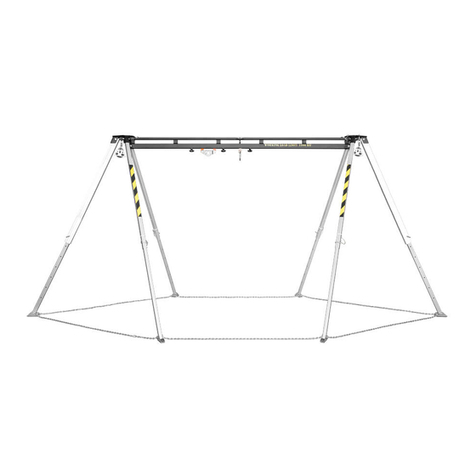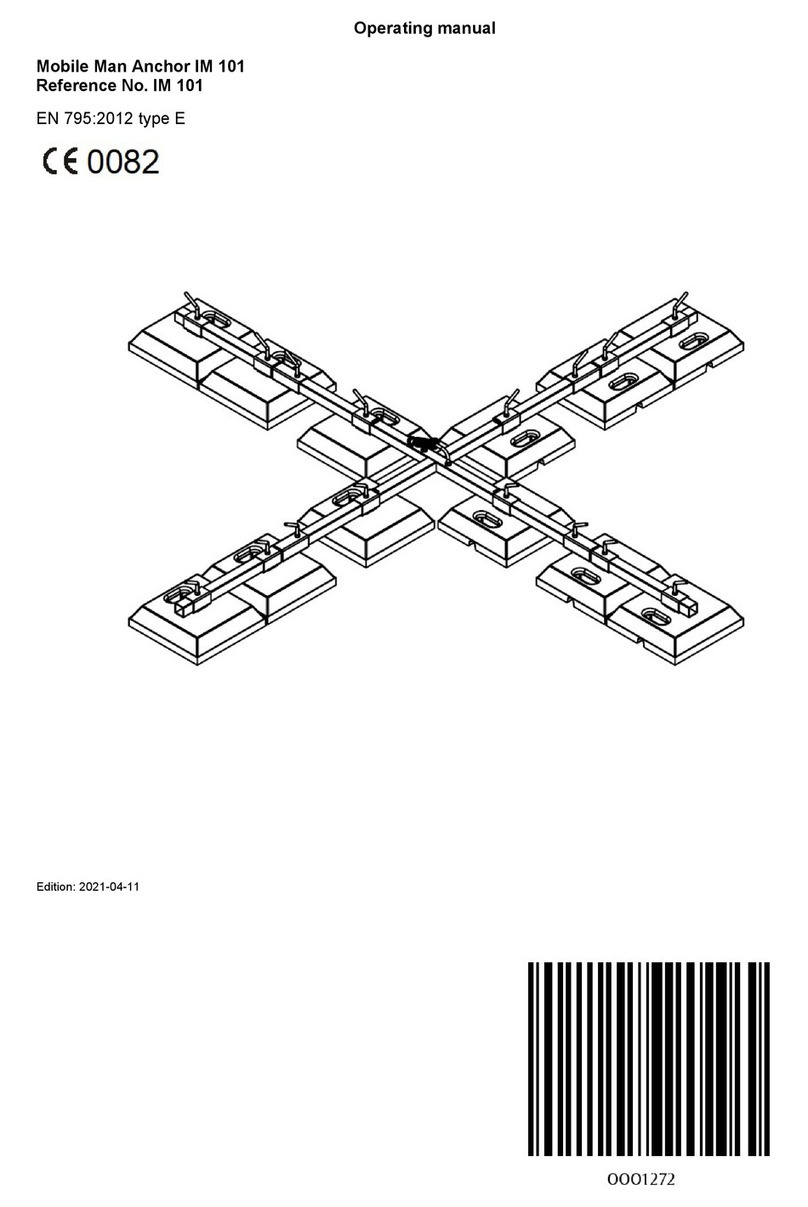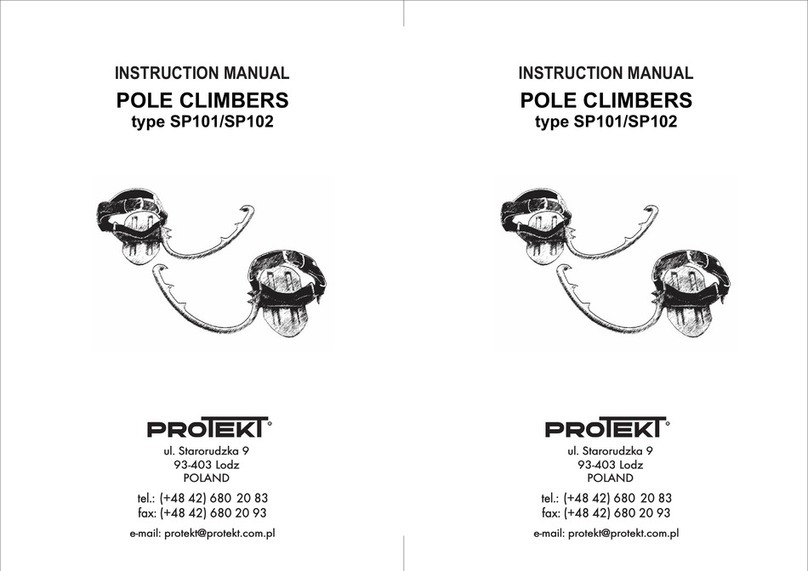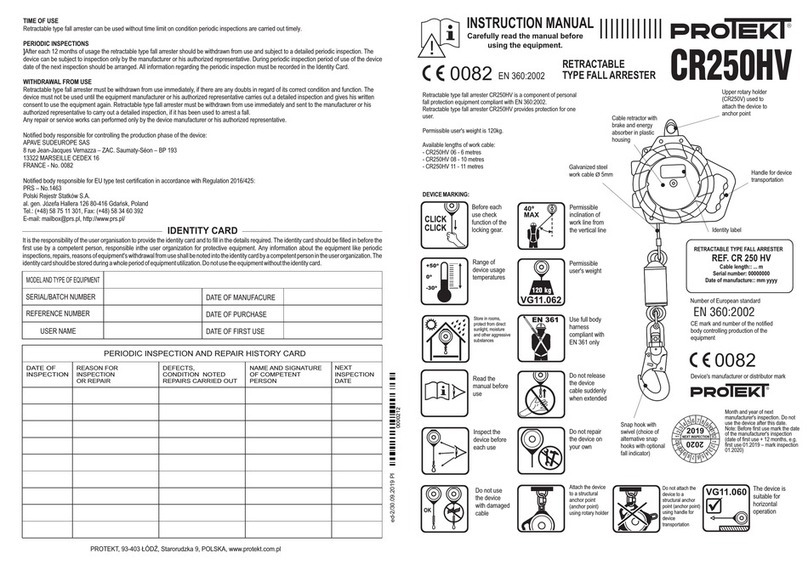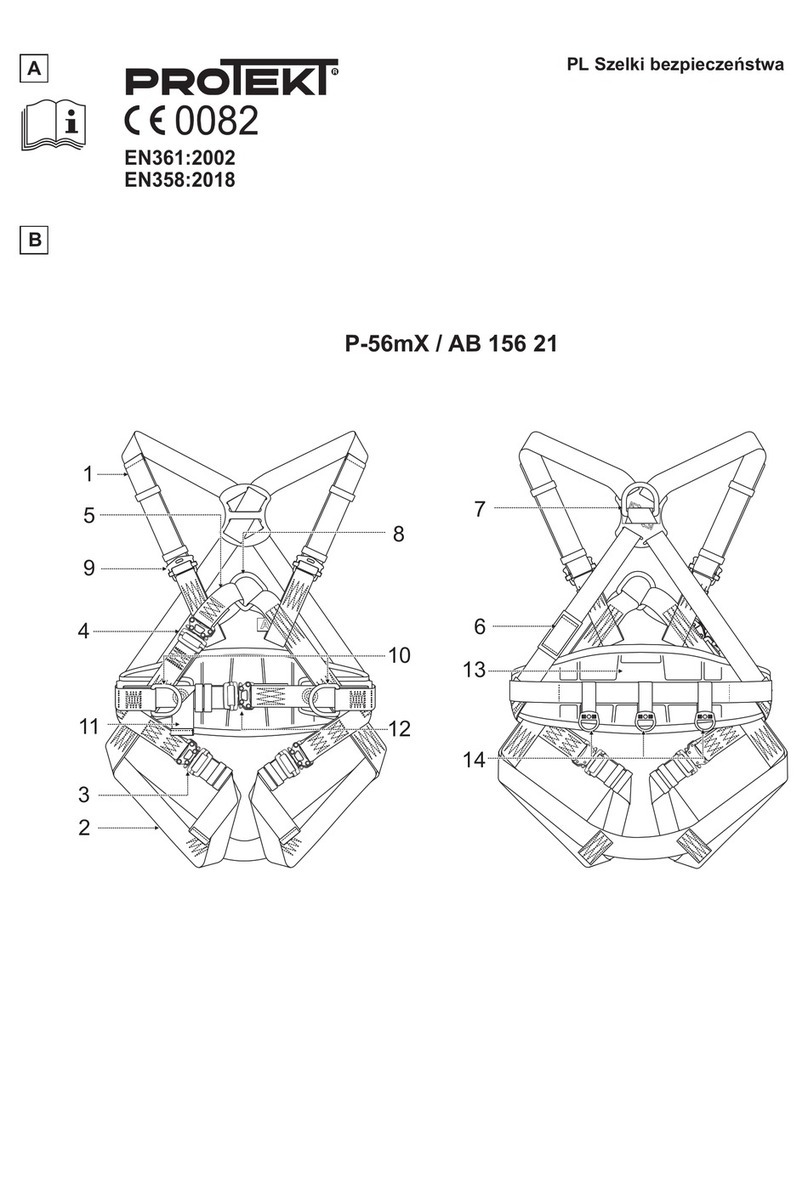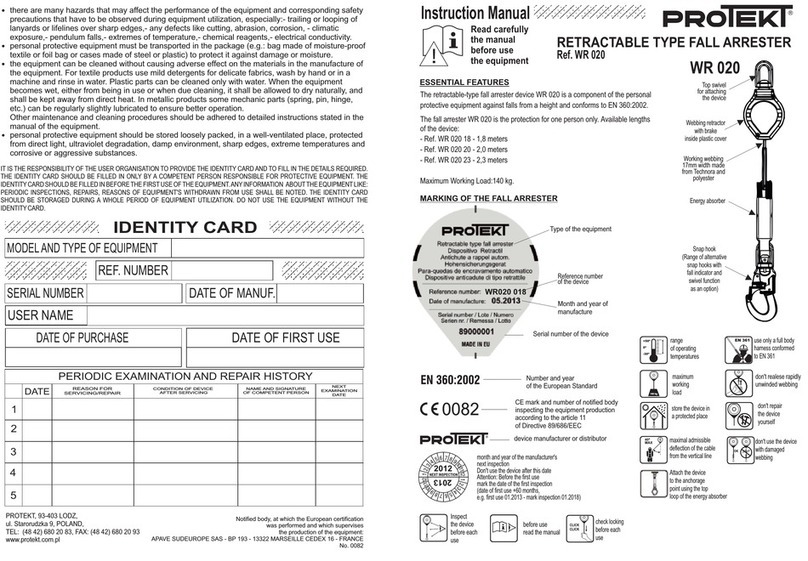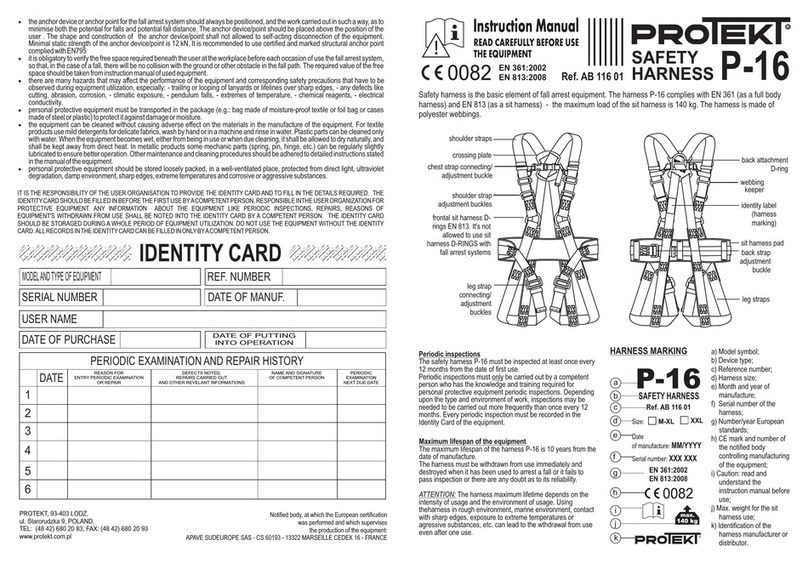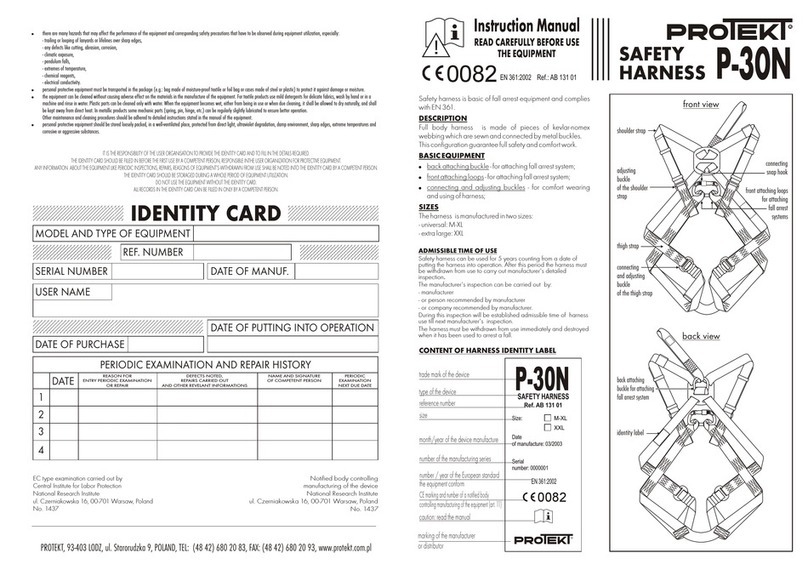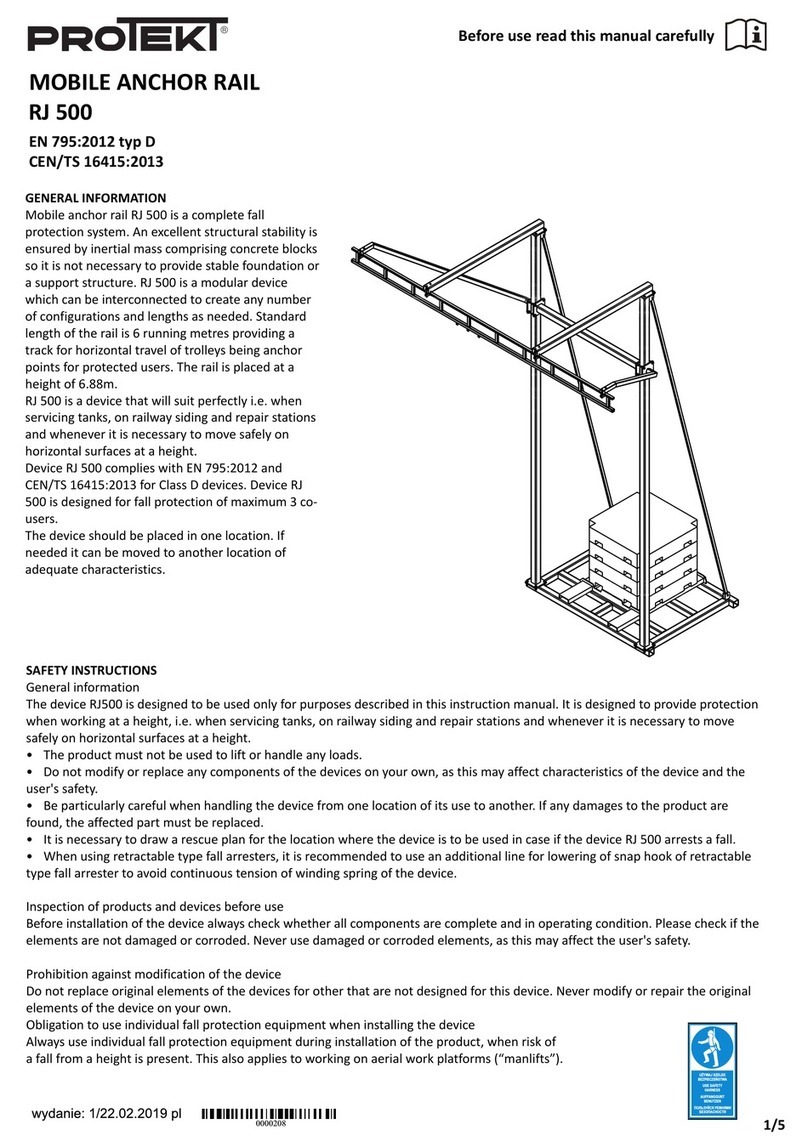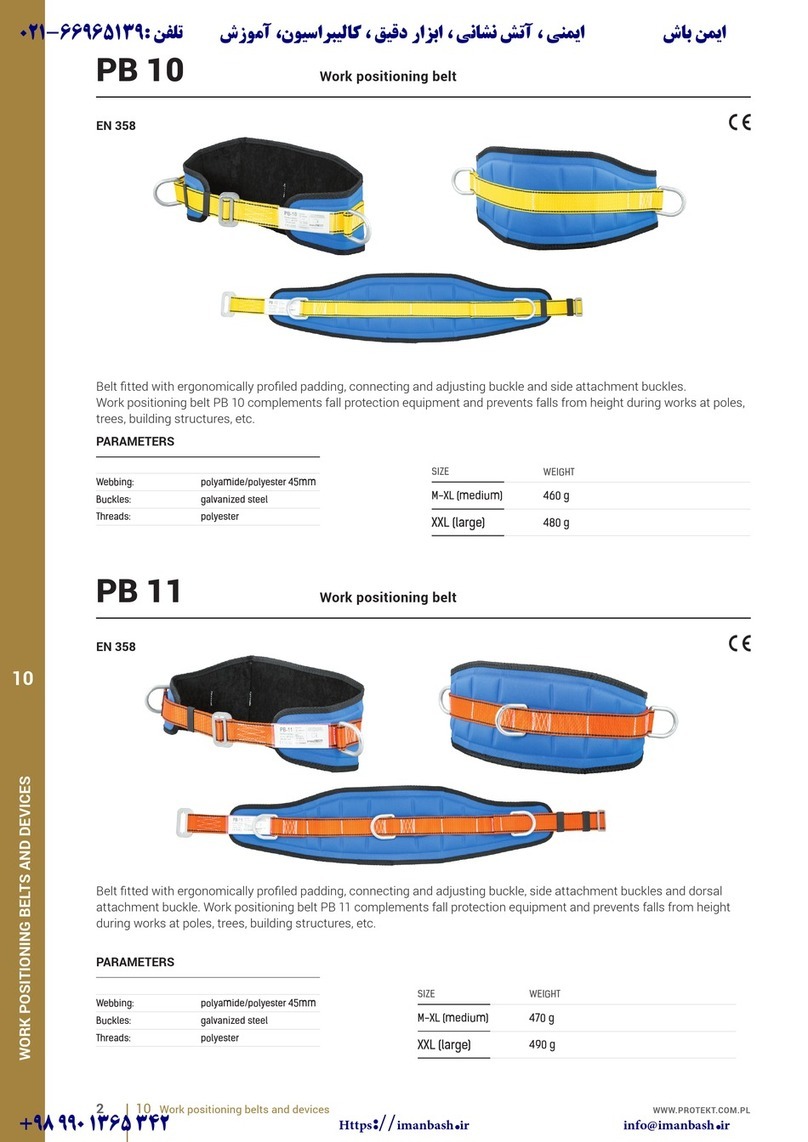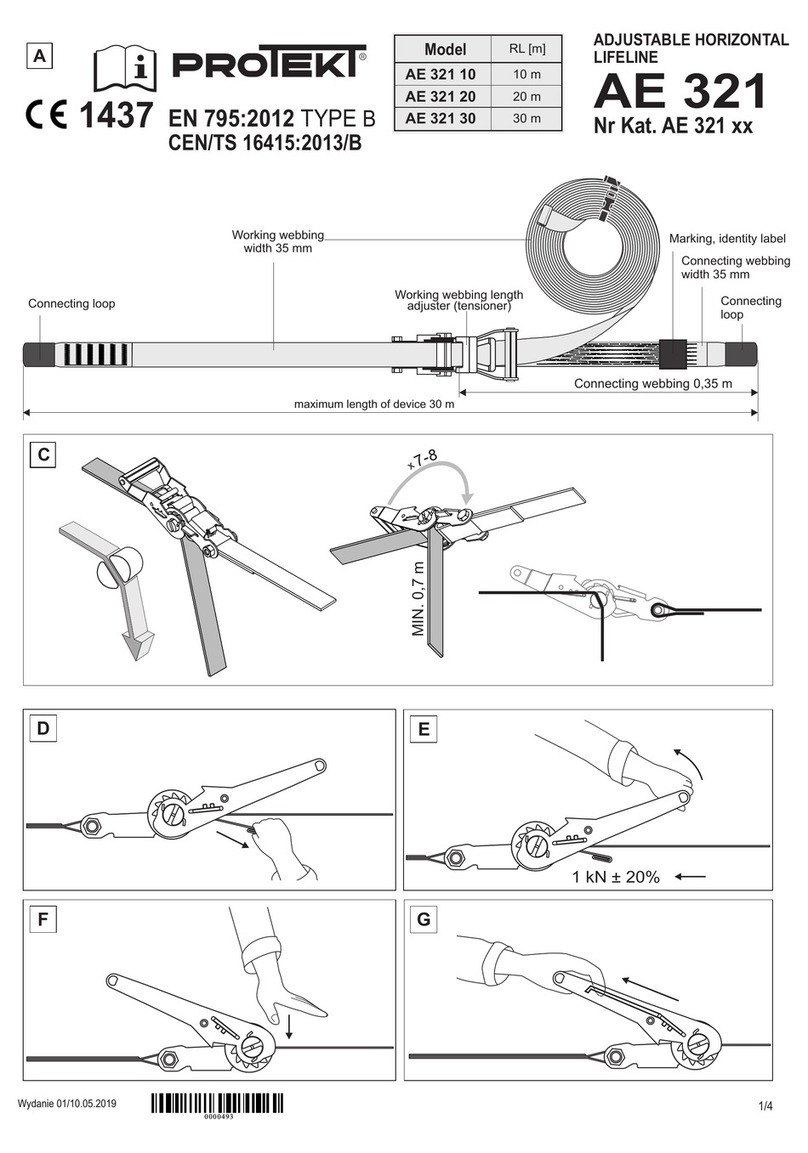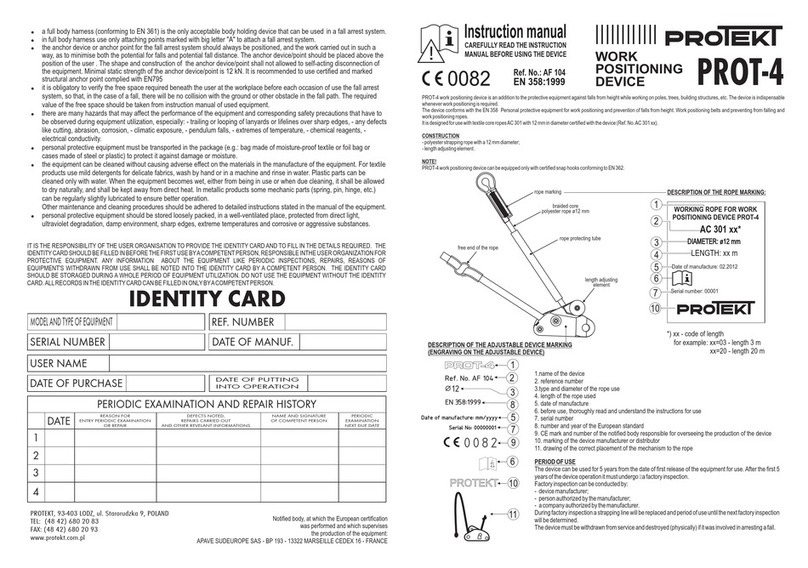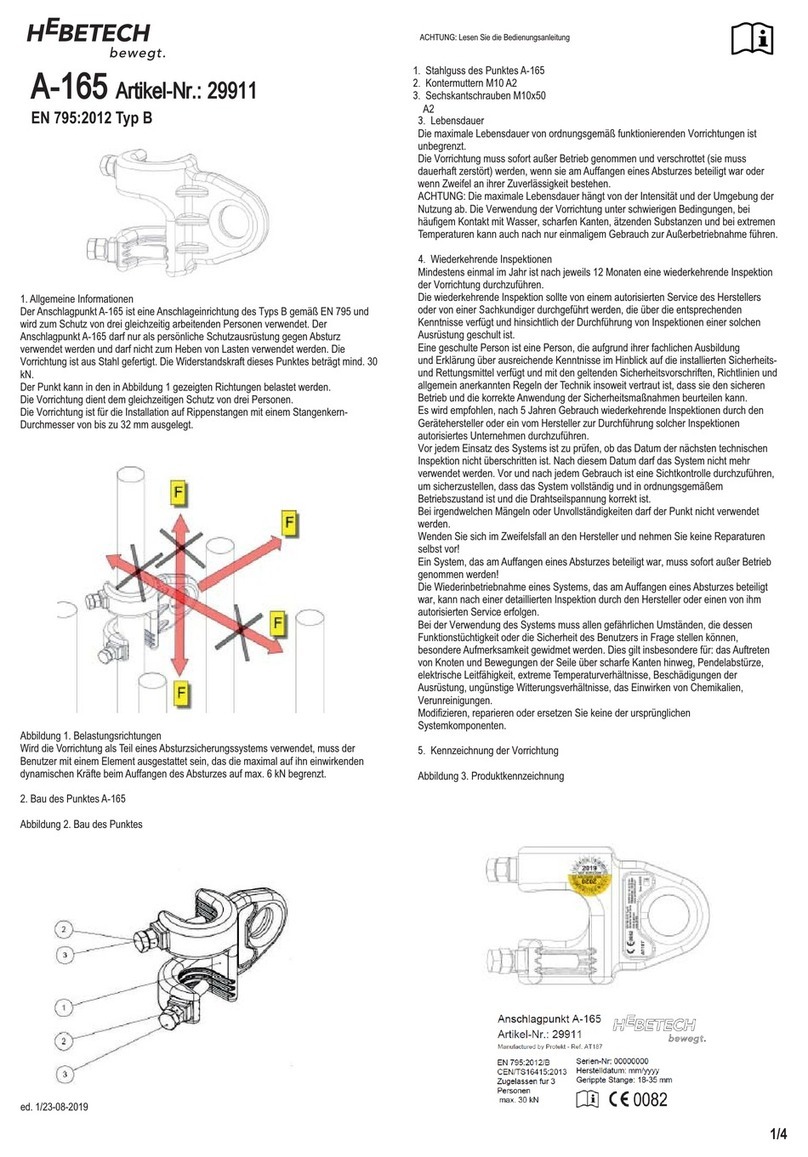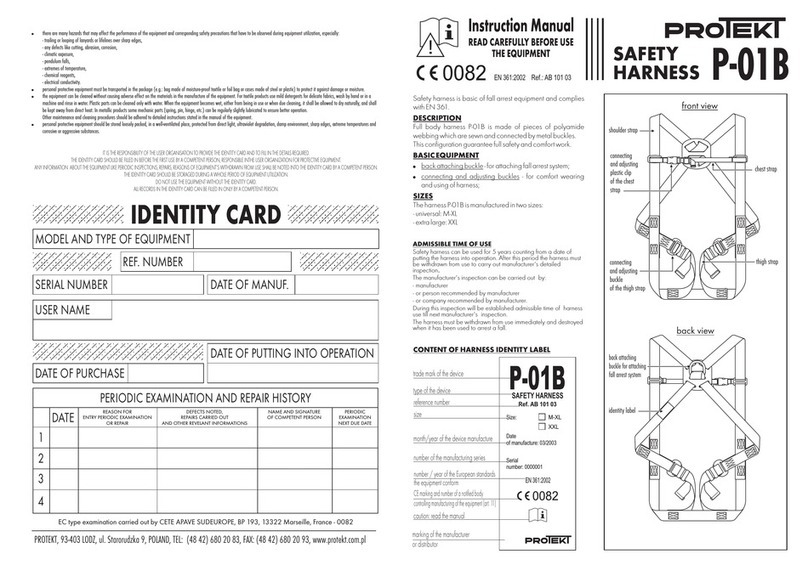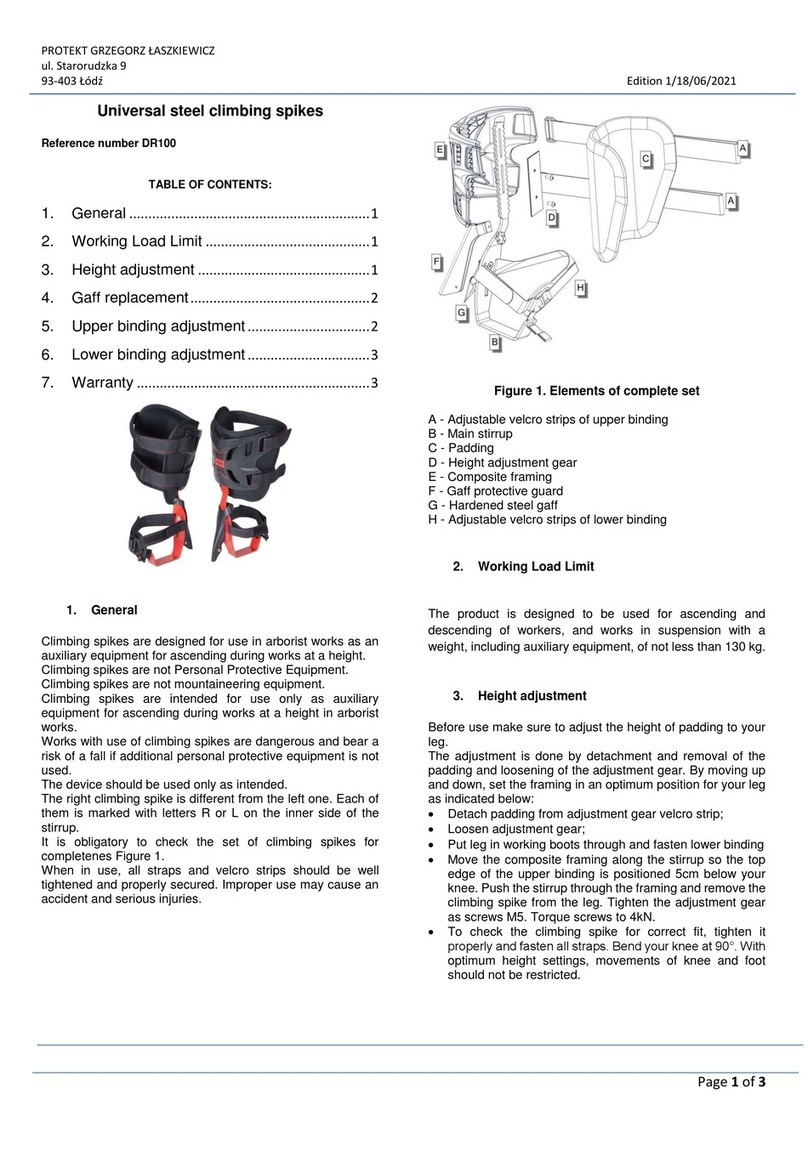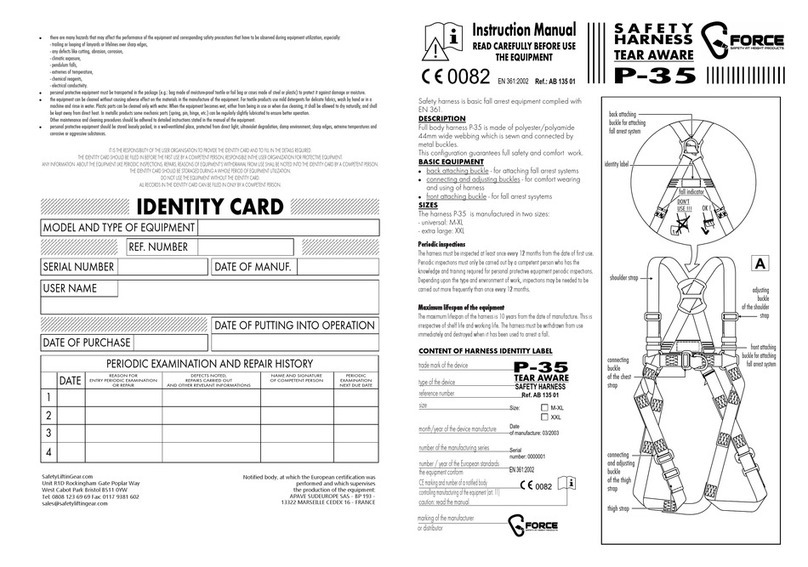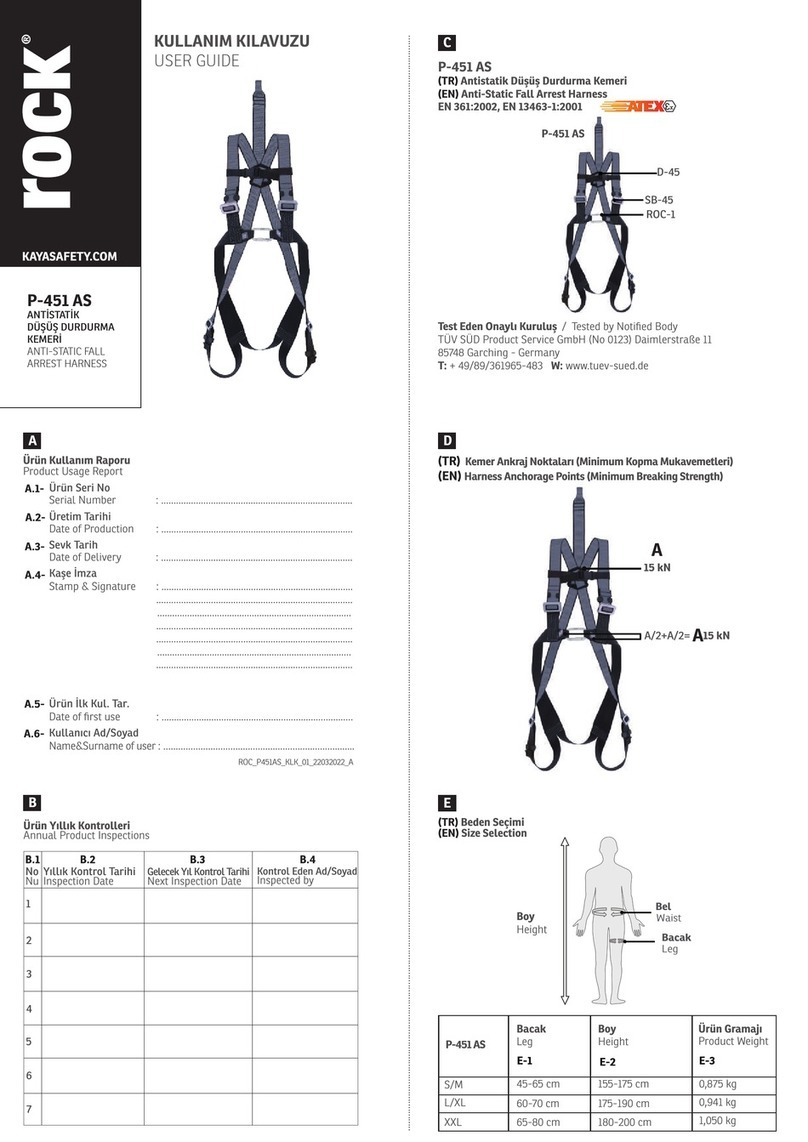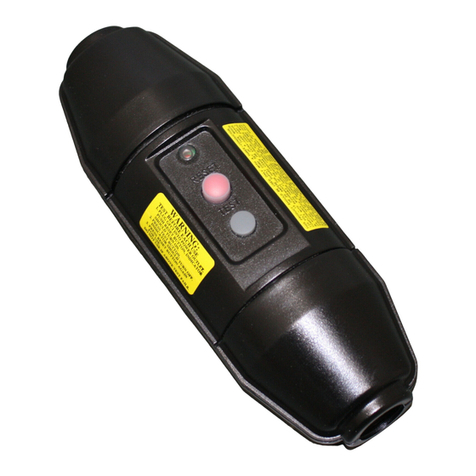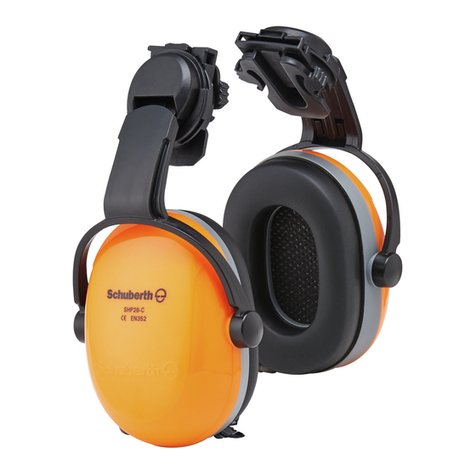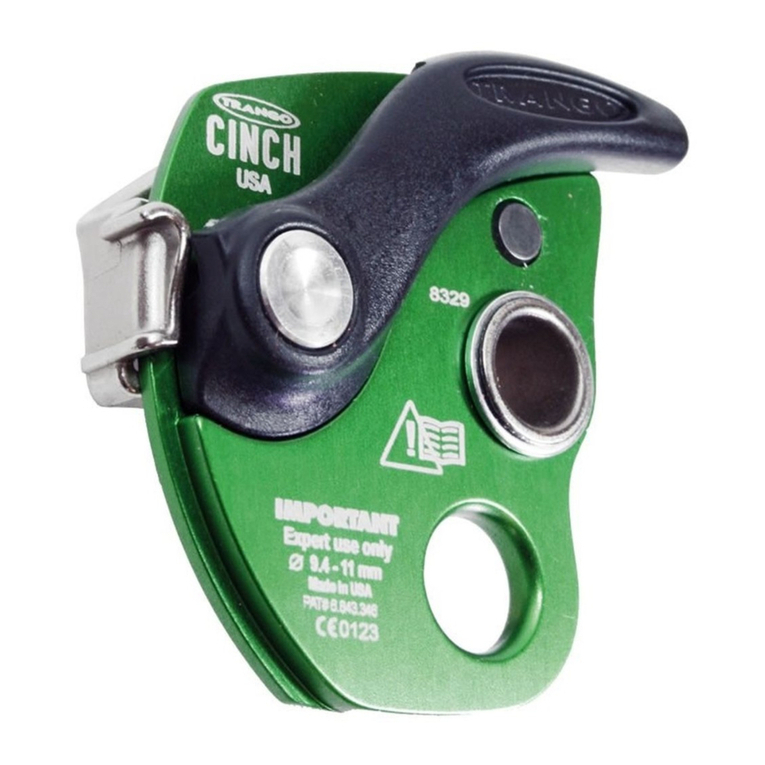
HOW TO PUT ON THE BELT
!
!
!
!
!
!
!
!
!
!
!
!
!
!
!
!
!
!
!
!
!
!
personal protective equipment shall only be used by a person trained and competent in its safe use.
a rescue plan shall be in place to deal with any emergencies that could arise during the work.
it is forbidden to make any alterations or additions to the equipment without the manufacturer's prior written consent.
any repair shall only be carried out by equipment manufacturer or his certified representative.
personal protective equipment shall not be used outside its limitations, or for any purpose other than that for which it is intended.
before use ensure about the compatibility of items of equipment assembled into a fall arrest system. Periodically check connecting and
adjusting of the equipment components to avoid accidental loosening or disconnecting of the components.
it is forbidden to use combinations of items of equipment in which the safe function of any one item is affected by or interferes with the
safe function of another.
before each use of personal protective equipment it is obligatory to carry out a pre-use check of the equipment, to ensure that it is in a
serviceable condition and operates correctly before it is used.
during pre-use check it is necessary to inspect all elements of the equipment in respect of any damages, excessive wear, corrosion,
abrasion, cutting or incorrect acting, especially take into consideration:
- in full body harnesses and belts - buckles, adjusting elements, attaching points, webbings, seams, loops;
- in energy absorbers - attaching loops, webbing, seams, casing, connectors;
- in textile lanyards or lifelines or guidelines - rope, loops, thimbles, connectors, adjusting element, splices;
- in steel lanyards or lifelines or guidelines - cable, wires, clips, ferrules, loops, thimbles, connectors, adjusting elements;
- in retractable fall arresters - cable or webbing, retractor and brake proper acting, casing, energy absorber, connector;
- in guided type fall arresters - body of the fall arrester, sliding function, locking gear acting, rivets and screws, connector, energy
absorber;
- in connectors - main body, rivets, gate, locking gear acting.
after every12 months of utilization, personal protective equipment must be withdrawn from use to carry out periodical detailed inspection.
The periodic inspection must be carried out by
a competent person for periodic inspection. The periodic inspection can be carried out also by the manufacturer or his authorized
representative.
In case of some types of the complex equipment e.g. some types of retractable fall arresters the annual inspection can be carried out
only by the manufacturer or his authorized representative.
personal protective equipment must be withdrawn from use immediately when
personal protective equipment must not be used by a person with medical condition that could affect the safety of the equipment user in
normal and emergency use.
personal protective equipment should be a personal issue item.
regular periodic inspections are the essential for equipment maintenance and the safety of the users which depends upon the continued
efficiency and durability of the equipment.
during periodic inspection it is necessary to check the legibility of the equipment marking.
it is essential for the safety of the user that if the product is re-sold outside the original country of destination the reseller shall provide
instructions for use, for maintenance, for periodic examination and for repair in language of the country in which the product is to be
used.
any doubt arise about its condition for safe use and not
used again until confirmed in writing by equipment manufacturer or his representative after carried out the detailed inspection.
personal protective equipment must be withdrawn from use immediately and destroyed (or another procedures shall be introduced
according detailed instruction from equipment manual) when it have been used to arrest a fall
a full body harness is the only acceptable body holding device that can be used in a fall arrest system.
in full body harness use only attaching points marked with big letter "A" to attach a fall arrest system. Marking like "A/2'" or a half of "A"
means the necessity of attaching a fall arrest system to both attaching points together simultaneously. It is strictly forbidden to attach a
fall arrest system to the single attaching point marked "A/2'" or a half of "A".
the anchor device or anchor point for the fall arrest system should always be positioned, and the work carried out in such a way, as to
minimise both the potential for falls and potential fall distance. The anchor device/point should be placed above the position of the user .
The shape and construction of the anchor device/point shall not allowed to self-acting disconnection of the equipment. Minimal static
strength of the anchor device/point is 1 kN. It is recommended to use certified and marked structural anchor point complied with EN795.
it is obligatory verify the free space required beneath the user at the workplace before each occasion of use the fall arrest system, so
that, in the case of a fall, there will be no collision with the ground or other obstacle in the fall path. The required value of the free space
should be taken from instruction manual of used equipment.
there are many hazards that may affect the performance of the equipment and corresponding safety precautions that have to be
observed during equipment utilization, especially:
- trailing or looping of lanyards or lifelines over sharp edges, extremes of temperature,
- any defects like cutting, abrasion, corrosion, - chemical reagents,
- climatic exposure, - electrical conductivity.
- pendulum falls,
personal protective equipment must be transported in the package (e.g.: bag made of moisture-proof textile or foil bag or cases made of
steel or plastic) to protect it against damage or moisture.
the equipment can be cleaned without causing adverse effect on the materials in the manufacture of the equipment. For textile products
use mild detergents for delicate fabrics, wash by hand or in a machine and rinse in water. Plastic parts can be cleaned only with water.
When the equipment becomes wet, either from being in use or when due cleaning, it shall be allowed to dry naturally, and shall be kept
away from direct heat. In metallic products some mechanic parts (spring, pin, hinge, etc.) can be regularly slightly lubricated to ensure
better operation.
Other maintenance and cleaning procedures should be adhered to detailed instructions stated in the manual of the equipment.
personal protective equipment should be stored loosely packed, in a well-ventilated place, protected from direct light, ultraviolet
degradation, damp environment, sharp edges, extreme temperatures and corrosive or aggressive substances.
.
(which conforms to EN 361)
0
to
-
,
!
!
!
THE ESSENTIAL PRINCIPLES FOR USERS OF PERSONAL PROTECTIVE EQUIPMENT AGAINST FALLS FROM A HEIGHT
USING WORK POSITIONING
LANYARD
Work positioning lanyard must be anchored to the point
of construction that is situated at waist level or above.
Work positioning lanyard must be kept taut to restrict
free movement to a maximum 0,6 m.
Work positioning lanyard can be anchored by puting it
around construction element. The endings of the lanyard
are attached to both side buckles of the belt (pic. A).
The lanyard fixed to one of the side buckle of the belt
can be also anchored to construction element with snap
hook of another lanyard ending (pic. B)
Work positioning belt with a lanyard
is not the protection against fall from a height
and it is forbidden to used it in this puspose.
A
B
CAUTION !
!
!
!
the strap is correctly adjusted - tighten enough to feel
comfortable.
side attaching buckles are correctly positioned
symmetrically at the level of the hips.
connecting buckle is correctly positioned at the middle
of the abdomen.
The belt is put on correctly if:
When there is a danger of falling it is necessary
to use additional protection against a falls from
a height.
1
2
3
Connecting of the buckle

